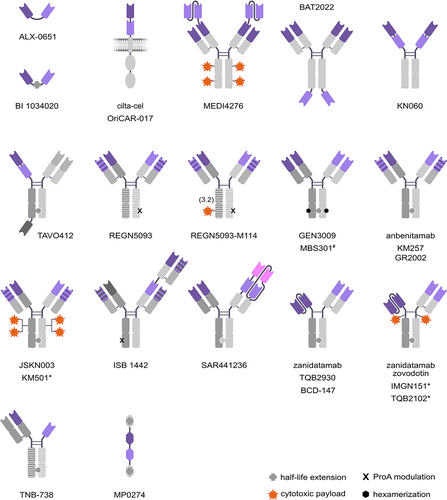Figures & data
Table 1. Biparatopic antibodies in the clinic. Molecules are listed in chronological order by start of first clinical trial.
Figure 1. bpAb architectures evaluated in clinical trials.

Figure 2. MoAs of bpAbs.

Register now or learn more
Open access
Table 1. Biparatopic antibodies in the clinic. Molecules are listed in chronological order by start of first clinical trial.
Figure 1. bpAb architectures evaluated in clinical trials.

Figure 2. MoAs of bpAbs.

People also read lists articles that other readers of this article have read.
Recommended articles lists articles that we recommend and is powered by our AI driven recommendation engine.
Cited by lists all citing articles based on Crossref citations.
Articles with the Crossref icon will open in a new tab.